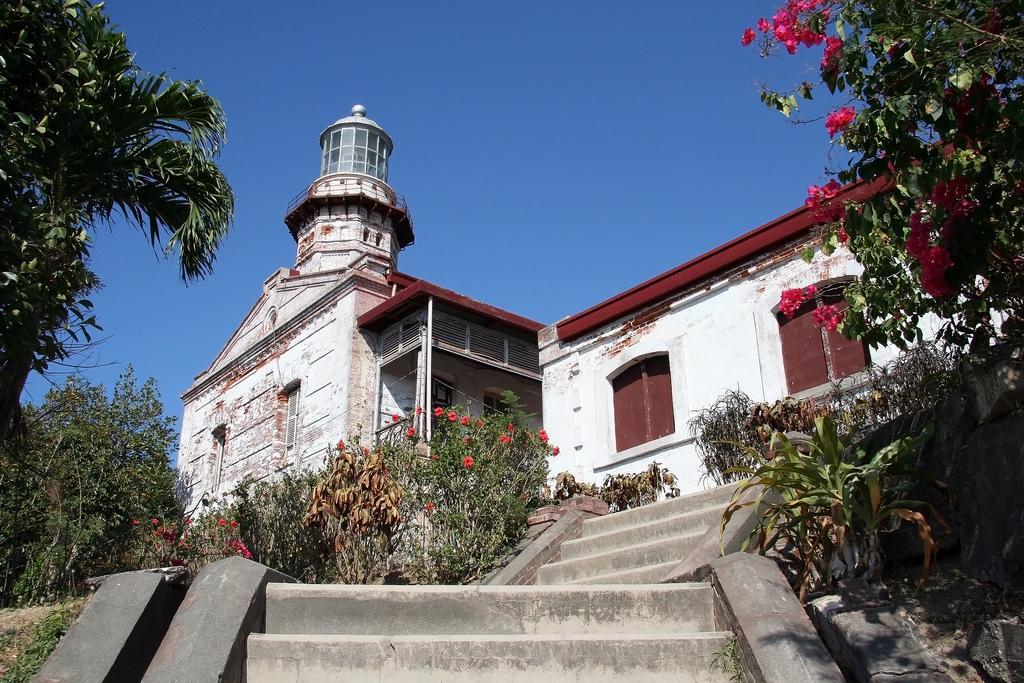
A cultural heritage structure in the rustic town of Burgos that was established during the Spanish Colonial period, it was first lit on March 30, 1892 and is set high on Vigia de Nagparitan Hill overlooking the scenic Cape Bojeador where early galleons used to sail by – Cape Bojeador or the Burgos Lighthouse.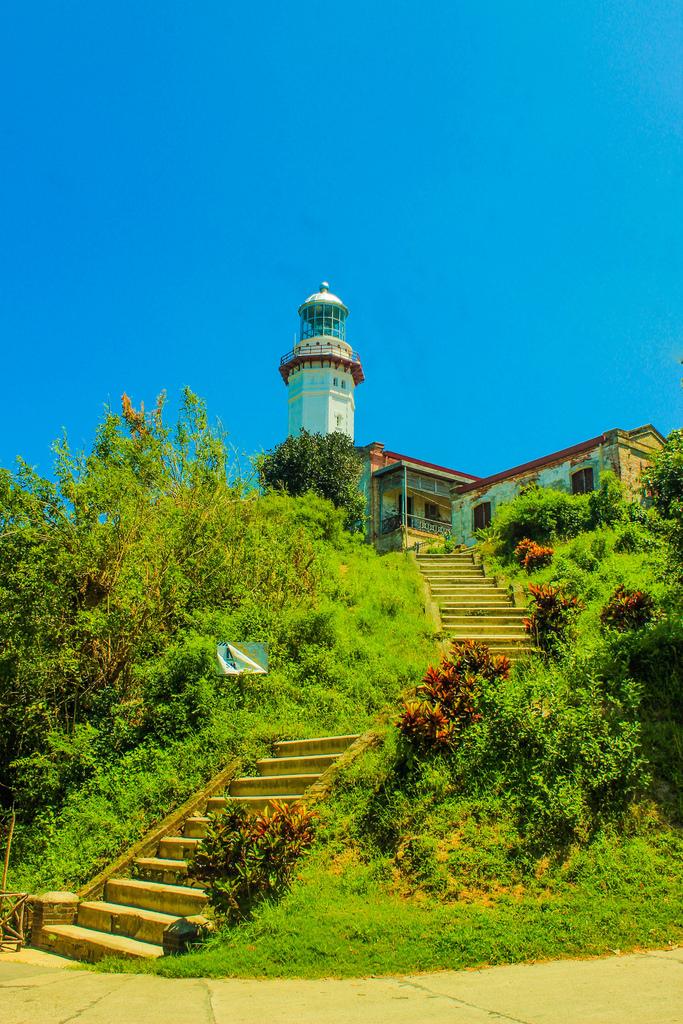
After over 100 years, it still functions as a welcoming beacon to the international ships that enter the Philippine Archipelago from the north and guide them safely away from the rocky coast of the town. The light marks the Northwestern point in Luzon and the Northeastern being Cape Engaño Lighthouse in Palaui Island, Santa Ana, Cagayan.

The Lighthouse
The 65-foot-tall (20 m) octagonal stone tower is the most prominent structure in the vicinity. It can be seen from as far away as Pasuquin town in the south and Bangui on the east on a clear day. Contrary to popular belief, it is not the highest-elevated or tallest lighthouse in the Philippines. Corregidor Lighthouse is higher at over 600 feet and among the Spanish Colonial lighthouses; the tower of Cape Melville Lighthouse is the tallest at 90 feet. In Mindoro Strait, the recently erected modern tower at the Apo Reef Light Station rises to a height of 110 feet.
The History
The Cape Bojeador lighthouse was part of the Spanish government's master plan of illuminating the Philippine archipelago. The project commenced with the execution of the lighthouses in the northern and western part of the Philippines and those around Iloilo and Cebu. The Burgos lighthouse was first lit on March 30, 1892.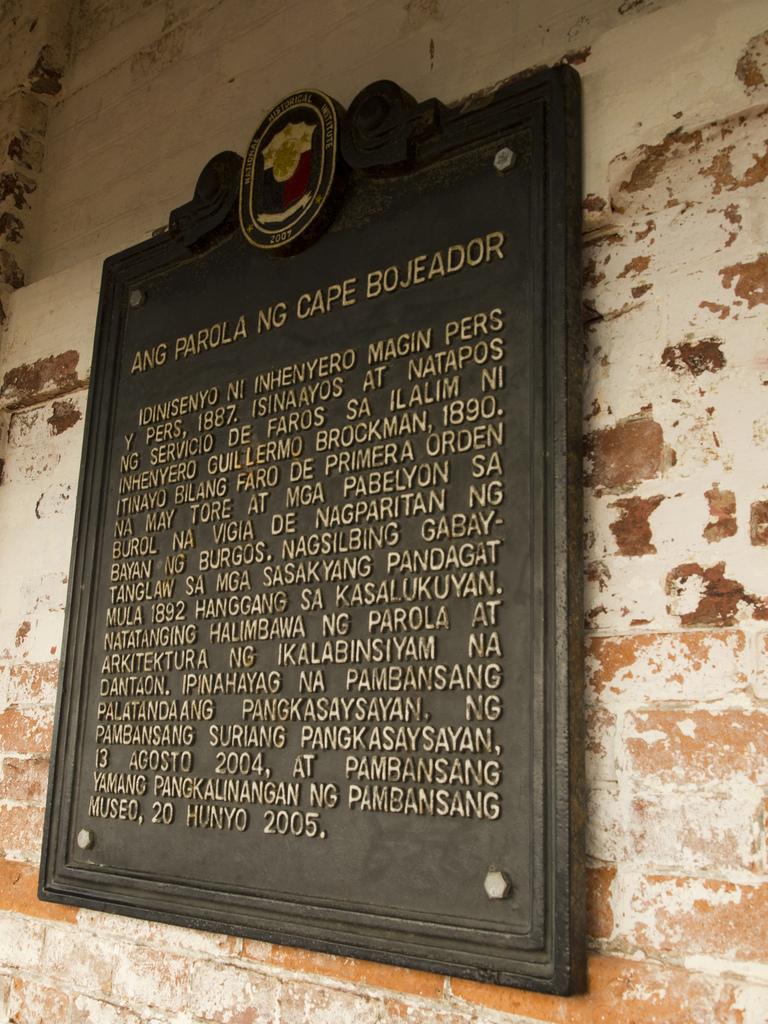
The Design
The lighthouse was first designed by Magin Pers and Pers in 1887 and was finished by the Lighthouse Service under Guillermo Brockman. It is typical of the Spanish Colonial lighthouses which is all masonry made with bricks that are widely used and produced in the area. The octagonal tower is topped with a bronze cupola and the viewing gallery is surrounded by decorative iron grill works.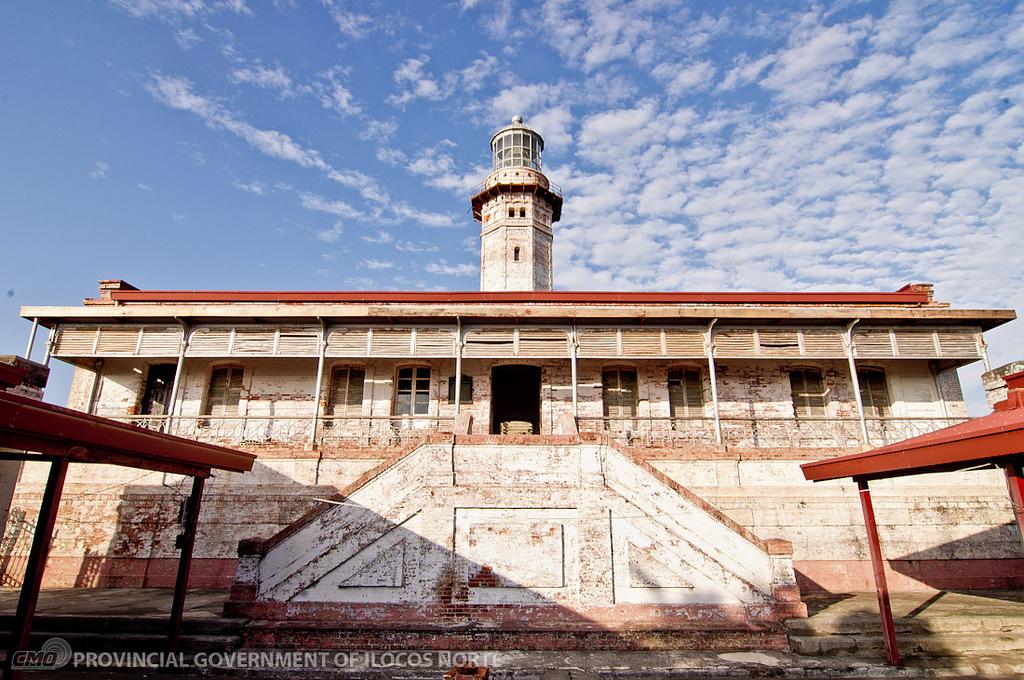
The Lighting Apparatus
The lighthouse was originally fitted with first-order Fresnel. The intense earthquake of 1990 that hit most of Luzon damaged the lenses and displaced the mechanism alignment of the original first-order apparatus making it inoperable.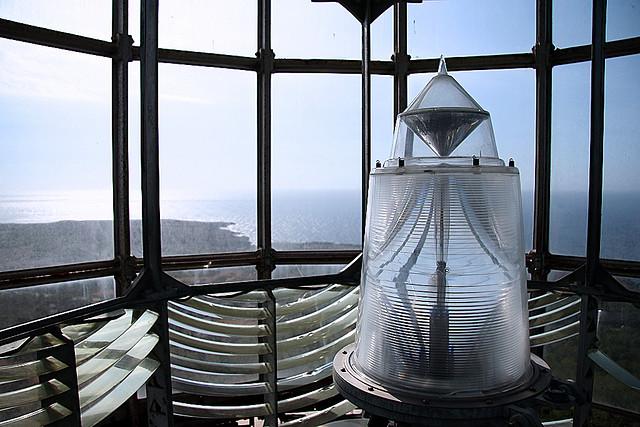
The beam now comes from a modern electric lamp that is powered by solar panels. The light before was provided by pressurized kerosene lamps very much like "Coleman lamps". In 2005, the old pressure vessels and wicks for the light could still be found in the shed.
The Historical Markers
Cape Bojeador Lighthouse was declared a National Historical Landmark on August 13, 2004 and a National Cultural Treasure on June 20, 2005 by the Philippine Government.
 Stairs up to Cape Bojeador Lighthouse
Stairs up to Cape Bojeador Lighthouse
Visiting the lighthouse
Cape Bojeador lighthouse is the most accessible of all the lighthouses in the island of Luzon. Access to the lighthouse is through a two-lane narrow concrete road that starts from the Maharlika Highway in Brgy. Paayas, Burgos, about 35 km. north from Laoag City, capital of Ilocos Norte. After passing Paayas, a sign on the right side of the highway indicates the winding road that leads to the base of the lighthouse.
At the parking lot, visitors climb a flight of concrete stairs to the perimeter wall which offers a good view of Cape Bojeador and South China Sea and enter the courtyard. Look for the lighthouse keeper and inform him of your intentions. The service buildings and the cistern are located in the courtyard. The elegant T-shaped stairway leads you up to the verandah of the main pavilion. The hallway of the main pavilion takes you to the foot of the covered stairs that lead to the entrance of the tower. A spiral staircase leads the visitor to the lantern room on top. Only a certain number of people are allowed in the tower at a time. Access to the gallery depends on the outside wind condition.
The pavilion has now been transformed into a small museum as well as lodging for people seeking basic accommodation, though except from shared cooking facilities and water from the cistern, no other amenities are provided.
Visiting the area is recommended in the months of November to January, when the cold winds from winter China are felt throughout the normally hot Ilocos Region.









